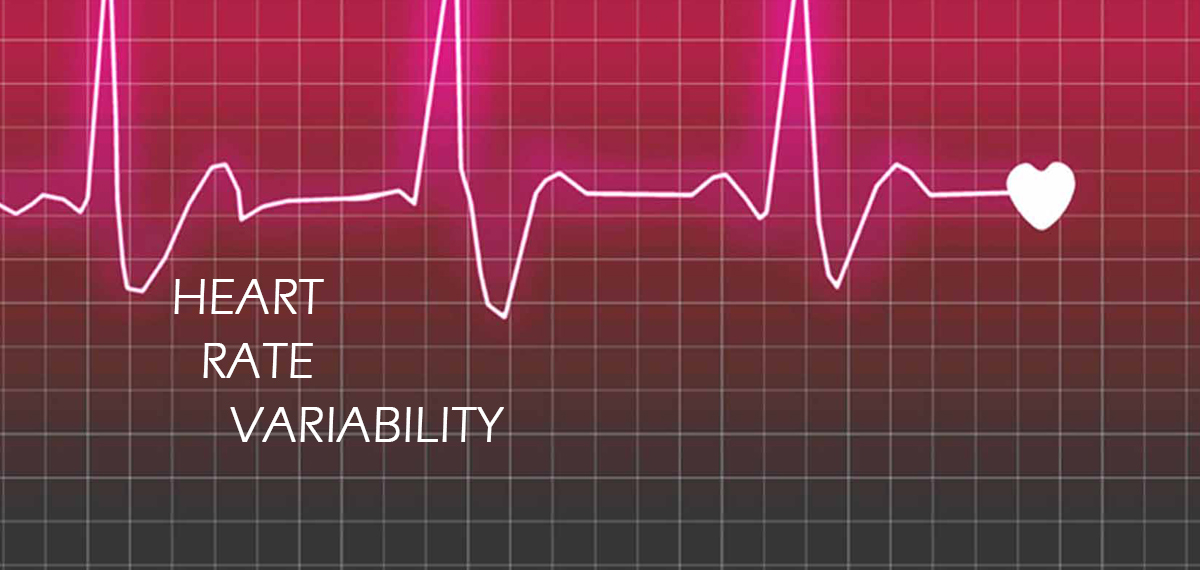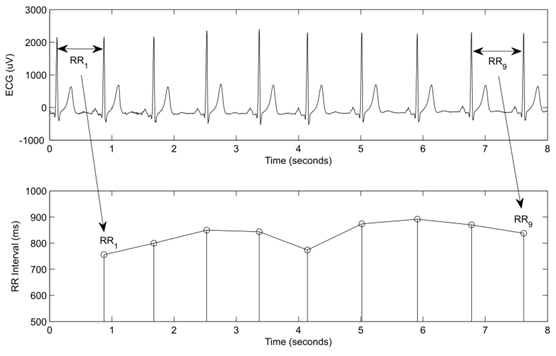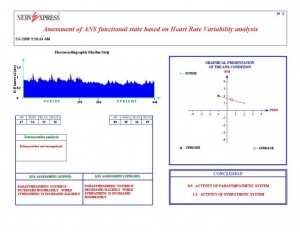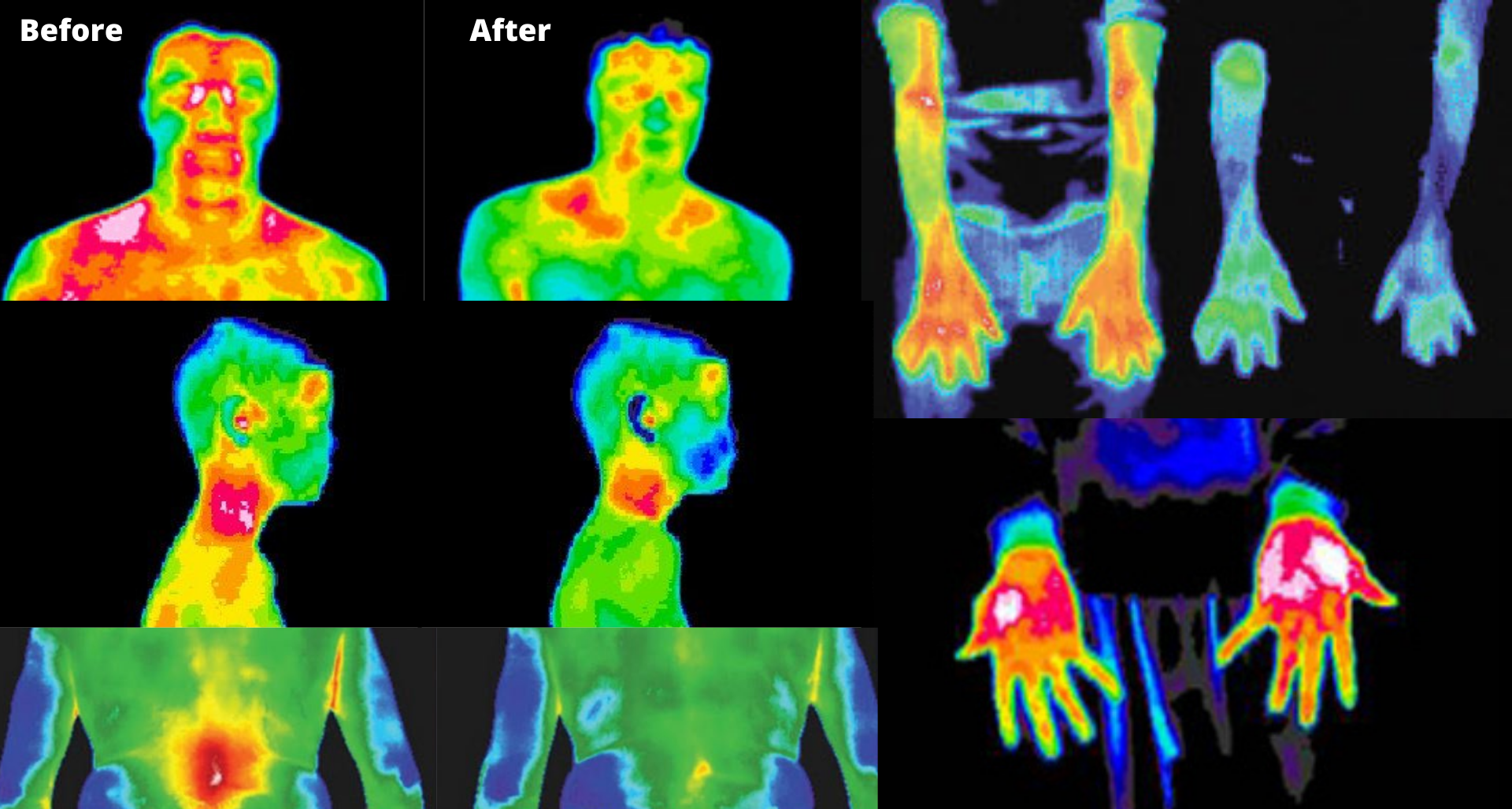
What is Heart Rate Variability?
The Science Book Version: Heart Rate Variability (HRV) is a quantitative analysis of autonomic nervous system function. It’s a window to look at the control and coordination of the autonomic nervous system by observing that control directly on the heart rate under various states of stress. This technology is based on the assessment of the RR wave interval derived from ECG.
The Translation: HRV technology is a time-lapse picture of how your nervous system is functioning. It compares the sympathetic and parasympathetic nervous system and analyzes how well they balance.
The sympathetic nervous system is your “survival mode.”
Let’s say you’re walking down the street and you see a raging dog. Your natural reaction is to turn and run! This running takes a lot of energy.
At that moment you would want your body to focus its energy on your muscles and respiratory system, rather than your digestion and blood pressure. That is the sympathetic nervous system. This states detects the threat through your five senses and puts your body in survival mode. Your body would then be focusing all of its resources on you running away.
When your sympathetic nervous system is stimulated, your digestion is inhibited.
The parasympathetic nervous system does the opposite. The parasympathetic nervous system is your body’s “recovery mode.” When your body doesn’t detect danger, you can relax and your parasympathetic nervous system is stimulated. This slows down the heart rate, stimulates digestion, as well as liver, bladder, and kidney function. The body begins to restore itself.

What Do You Learn By Measuring The Nervous System?
People in optimal health (like athletes) normally transition effortlessly between “survival mode” and “recovery mode.” However, when something is wrong with the body, like poor nutrition, injury, over-training in athletes, or even severe diseases like cancer, the transition becomes more difficult.
By using HRV technology to view the balance between these two systems before and after different types of treatment, a trained individual can be measured very quickly and accurately. We can see how well the balance has been restored, which is a major indicator of how well the treatment is working.*
The BioEnergiMed Heart Rate Variability Assessment System
*These statements have not been evaluated by the FDA (The Food and Drug Administration). This device is not intended to diagnose, prevent, treat, or cure any diseases and should only be administered by qualified individuals.*
Resources
Your body reacts to nearly everything happening around you through your emotions, observations, thoughts and activity. Your brain guides the body by regulating heart and other organs through autonomic nervous system. This physiological variation of heart rate, controlled by autonomic nervous system, is called Heart Rate Variability (also commonly known as HRV). Measuring heart rate variation reveals wide range of information about your body and health. Heart rate variability (HRV) is calculated based on variation of time in milliseconds between two heartbeats. HRV varies as you breathe in and out (see picture below).


Related Materials
A collection of white papers and reports on HRV
Longevity
Measuring Effects With HRV
Various Tests & Studies
Zen Meditation and HRV test
Electrical (ECG) vs. Optical-based (PPG)
Heart Response and the VitaPlex
Subtle Energy’s Interaction with the Human Body
Effect of trimetazidine on heart rate variability in elderly patients with acute coronary syndrome
Heart Rate Variability to Assess Combat Readiness
A Heart and A Mind: Self-distancing Facilitates the Association Between Heart Rate Variability, and Wise Reasoning
What is inflammation?

While the inflammatory response is always a component of pain and pain syndromes, pain is not always a component of the inflammatory response in the body. Chronic silent inflammation is probably one of the most insidious burdens on the vast majority of clients in the clinical practice.
While there are numerous pain scales from reported patient experience, there are little or no inflammatory measurement scales. As a result, most patients will deny having inflammation even in the presence of objective biomarkers to the contrary. It’s important to know the biochemical/biological markers that are consistent with inflammation status as a predictor of longevity and morbidity.
Additional, non-invasive methods of the inflammatory response that are clinically reproducible and highly accurate can assist clinical decisions immensely. Heart Rate Variability and digital pulse analysis provide strong insight into the function of the autonomic nervous system. Both technologies provide a clear picture of sympathetic and parasympathetic function and overall neurological control of the body.

Body composition analysis provides deep insights into the inflammatory process, especially silent inflammation. Markers such as intercellular/extracellular water, phase angle, and body cell mass are all significant measures. Many organs and systems can be in silent inflammation for extended periods of time with minimal signs and symptoms or pain.

